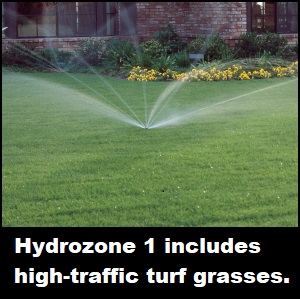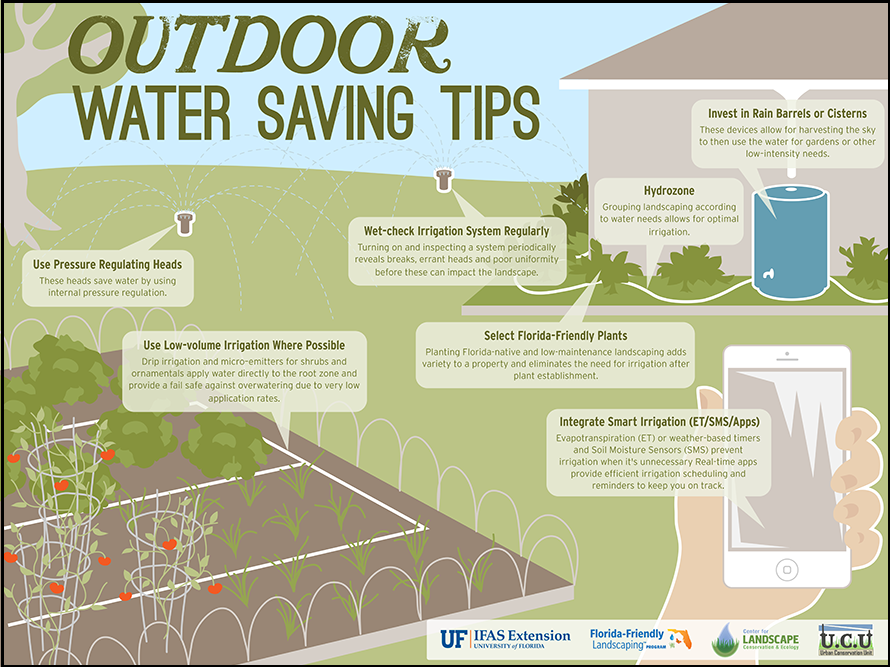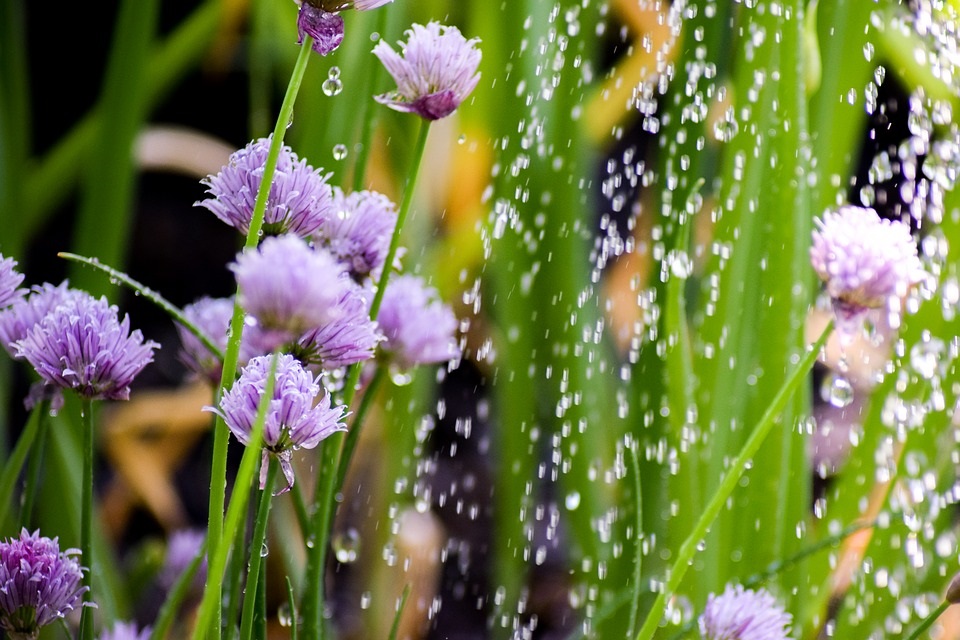The Importance of Grouping Plants
in Hydrozones
Unfortunately, many irrigation systems are set to water all plants in the landscape at the same time and rate.
This approach wastes water.
But by grouping together plants with similar water needs, homeowners can improve their irrigation system’s efficiency, avoiding both overwatering and underwatering. With hydrozoning, the plantings that require less water are situated farther from the water source.
The Hydrozone Plan
When creating hydrozones, you first want to identify the specific water requirements for individual plantings. (Information on water needs can be found through your local extension service.)
Wherever possible, consider replacing high-maintenance plants with native plants that would naturally require less water.

Once water needs of plants are identified, you’ll want to create four categories for watering: Routine Irrigation, Reduced Irrigation, Limited Irrigation and No Irrigation. When labeling your zones, consider not only types of plants in that area, but also element exposure.
For example, areas that receive direct sunlight will require more water than those located in shade. Similarly, for plantings situated at the top or bottom of a slope, you’ll need to account for runoff and accumulation.
Let’s take a look at each of the four zones.
Zone 1: Routine Irrigation.
This is the area that requires the most water. It’s the highest-maintenance hydrozone, and typically encompasses turf grasses, particularly in high-traffic areas such as playgrounds. (Other areas of your lawn may be zoned differently, and even allowed to go dormant or semi-dormant during dry spells.)
 Early morning is considered the best time to water a lawn, with less chance for evaporation and wind loss. Conversely, try not to water your lawn late in the evening; the grass will stay wet all night, and become more susceptible to disease. When watering a lawn, be sure to wet the soil to a depth of 4 to 6 inches.
Early morning is considered the best time to water a lawn, with less chance for evaporation and wind loss. Conversely, try not to water your lawn late in the evening; the grass will stay wet all night, and become more susceptible to disease. When watering a lawn, be sure to wet the soil to a depth of 4 to 6 inches.
This zone can also include any water-loving trees and shrubs you may have, such as eastern red cedar or elderberry bushes.
Zone 2: Reduced Irrigation
Zone 2 generally includes areas that are used less for activity, such as shrub and flower beds located near the main entrance of a home.
 The amount of water this zone requires depends on the maturity of the plants, amount of direct sunlight received, and depth of mulch.
The amount of water this zone requires depends on the maturity of the plants, amount of direct sunlight received, and depth of mulch.
The soil here should remain somewhat moist, not crumbly dry and not dripping wet. You want to make sure these plants receive enough water to thoroughly replenish the plant’s moisture. (Hint: After watering, the soil should feel like a damp paper towel.)
Zone 3: Limited Irrigation
This is a minimal hydrozone, for areas of your landscape requiring little irrigation. It may include buffer zones between homes, road verges (strips of vegetation between the sidewalk and street) and embankments.
This zone is an ideal location for native plants that will survive primarily on rainfall, with just occasional irrigation to enhance the plants’ health. The Ohio Department of Natural Resources can offer plenty of suggestions.
Zone 4: No Irrigation
The last hydrozone is reserved for areas that require no supplementary water supply. This could include utility areas, mulched parkways, and naturally existing vegetation or xeriscapes.

When hydrozoning, keep in mind the ways in which the various areas are used. Lush “oases” or higher water-use zones are often located closer to the house, while more natural areas with low water needs are placed at the back or edges of the property.
Your hydrozoning plan may take a bit of tweaking and modification, but it will eventually result in an environmentally friendly and thriving landscape.
Sources:
Water Conservation for Lawn and Landscape
Love Your Landscape
The Spruce







Trackbacks/Pingbacks